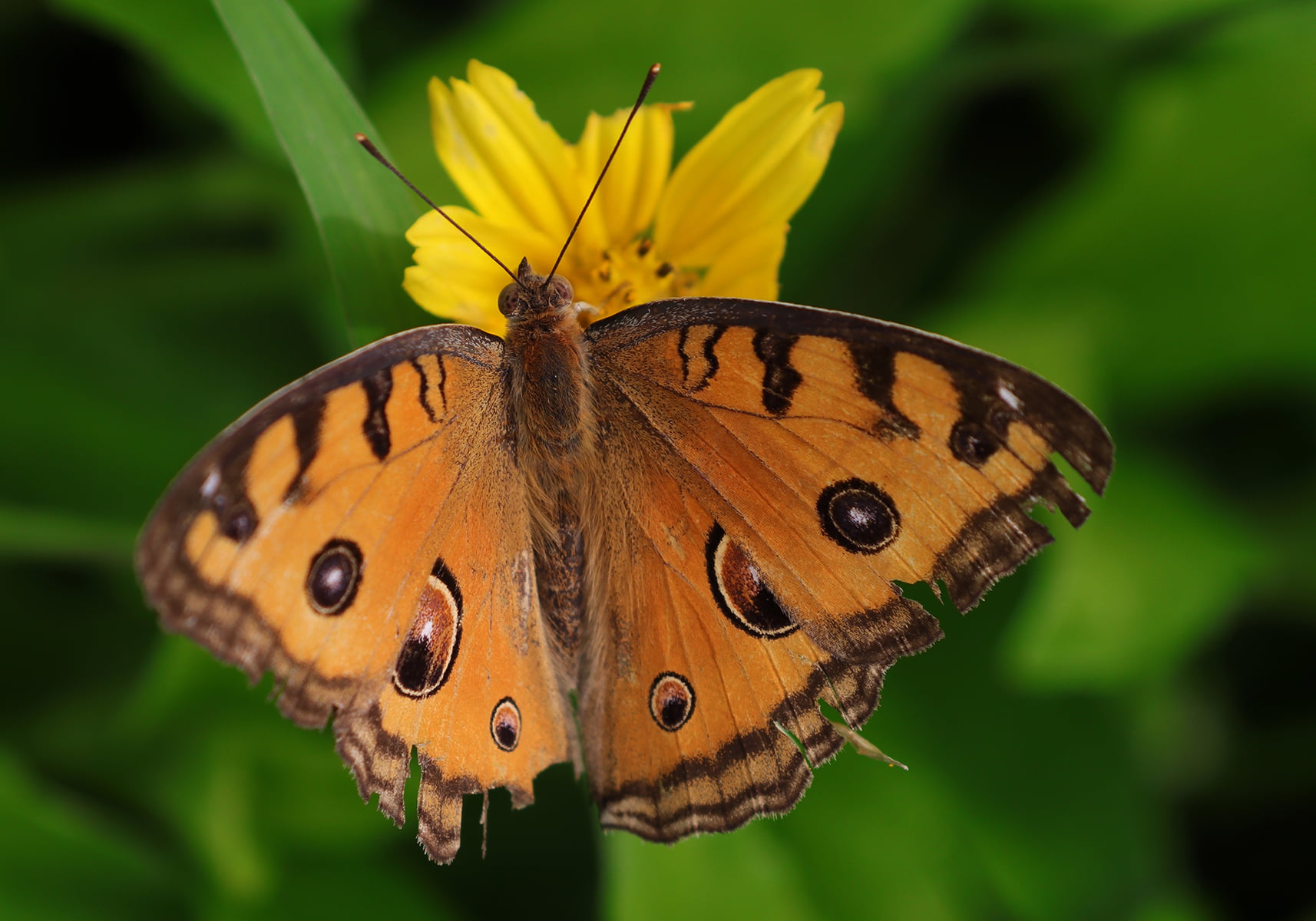Junonia almana has a yellowish brown upperwing with dark brown edges, on the forewing there are 4 brown bands. In space 2 near the tornal area there is a “peacock” eye point that protrudes and in space 5 there is an eye point that is smaller in size. On the hindwings there is a larger and more prominent eye point in spaces 5 – 6 near the apex. The underside of the wings is paler, there is an additional ocellus in space 2, the ocellus is smaller.
Larva: larvae of Junonia almana are yellowish green in color, cylindrical in shape and covered with many small turbles and long setae. The capsule of the head is dark brown to black. In the next stage there is an orange collar after the head capsule and a white collar in the thoracic segment, the color changes to black
Pupa: Junonia almana pupae are brown in color with a number of large white stripes or spots, the length of the pupa is about 18 – 21 mm.


